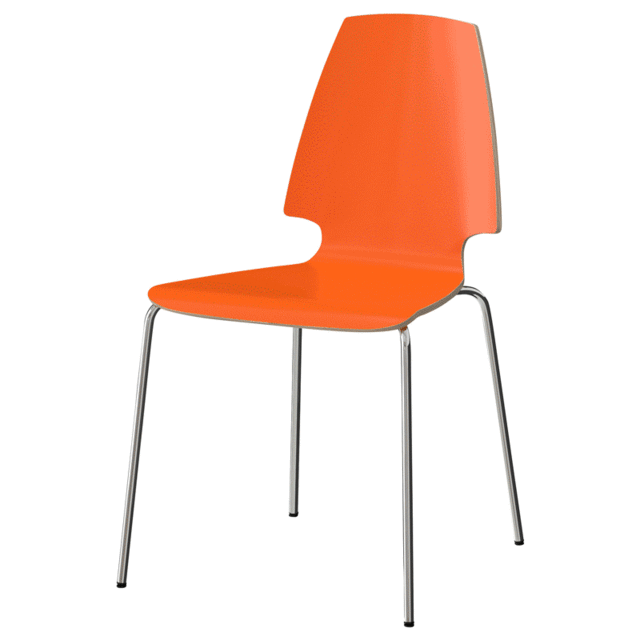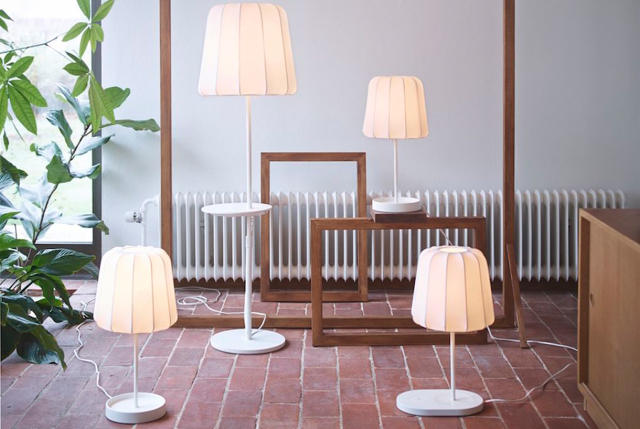From silicon furniture to the death of storage, Marcus Engman of Ikea Sweden talks about the near-future of your home.
There’s a good chance that Marcus Engman is directly responsible for at least one piece of furniture in your house—and if you’re a millennial, maybe all of it. As head of design for Ikea Sweden, Engman’s job is to oversee the design of new furniture and housewares that then winds up in the hands of millions of customers each year. Here, Engman predicts everything from the future of flat-pack furniture to the weird-feeling fabrics people will want to start touching to offset a world full of glass screens.
The Fluid Home
Traditionally, when people thought of their houses, they thought of them almost mathematically. A sofa + a television = a living room. A bed + a set of drawers = a bedroom. But in a constantly urbanising world, where more people are living in smaller spaces (by 2017, theWorld Health Organization predicts the majority of people will live in more tightly packed urban areas), what makes one room a living room and another room a bedroom is becoming a lot more fluid.
Furniture is going to have to evolve to keep pace. Take the sofa, Engman says. In the past, a sofa was the most important piece of furniture in the living room, and consequently the home. But that’s already changing. The sofa isn’t just for socialising anymore: people eat on their sofa, and in small apartments, they might even use it as their bed. As for pointing your sofa at a television, in a cord-cutting world, there’s no need for that.
From our partners:
“We’re already seeing a lot more people buying day beds instead of sofas,” Engman says. “That’s fluid home thinking.” And Engman expects the trend to continue, predicting that the table—not the sofa—will soon become the most important piece of furniture in most people’s homes: a multi-use piece of furniture you can work, eat, play, and socialise around.
Furniture That Does More
In a rapidly urbanising world, people will have to make do with smaller spaces, and less furniture overall. As a result, Engman says, the furniture in our homes is going to become more versatile. “It’s possible that pretty soon, a stool might be one of the most important pieces of furniture in your house, because it can do just so many things besides be a stool,” he says. “You can use it as a bedside table, a seat, an end table, or a step ladder, and you can easily design them to be nestable, so many stools can be stacked on top of each other when they’re not in use.”
The Death Of Storage
The history of the home is synonymous with the history of storage. You’ve got chests of drawers, armoires, cabinets, rec centers, bookshelves, CD shelves, and more. But that’s all changing. “There’s so much less to store,” Engman says. People don’t have room for storage in an urbanising world. And many of the things they used to store, like music, movies, and books, now live almost exclusively in the cloud. Our houses will be less cluttered with things, but the things we have, we’ll want to display.
People will always want to collect physical objects, as a way of showing who they are, Engman says. “People want to show off their collections, not hide them away,” he says, so storage methods will have to evolve to keep up. Like displays in the museum of your home, they need to be just as functional as they are exhibitionist. Think more open shelves and glass cabinets that allow you to show off your collection, instead of chests and drawers.
Smarter Furniture
Earlier last March, Ikea announced a line of new lamps that could wirelessly charge your gadgets, provided they support the Qi wireless charging standard. That’s just the first baby step of where Ikea sees furniture going. The Swedish furniture maker believes that furniture could one-day be as synonymous with silicon as home electronics are.
That’s not to say Ikea wants to become a gadget maker. “Our mission isn’t to sell electronics, but to figure out how to make life at home smarter and easier,” Engman says. One day, people could be just as excited and curious to download an update that adds new features to their smart appliances as they are to download the latest version of iOS, he says. Ikea plans to show off a conceptual Ikea kitchen in Milan next month at the Salone del Mobile.
Flat Design Comes To Furniture Packaging
Ikea is synonymous with flat-pack furniture, but Engman says, “We’re always on the lookout to pack things flatter. It just doesn’t make sense to mail air all around the world, or even around the country. It’s just not sustainable, and it makes furniture more expensive than it needs to be.”
In the next five years, Engman expects that Ikea and its competitors will figure out ways to package furniture flatter than ever, which will in turn make it cheaper to buy because of reduced transportation costs. Asked if he has heard of MIT’s project to create programmable 4-D materials that can bend into shape in response to heat or water—potentially allowing brands like Ikea to ship flat-pack furniture that doesn’t need to be constructed—Engman wouldn’t comment directly, but said the company is constantly “looking at new material innovations” for the future. However it’s done, the furniture of the future is flatter.
Personalisation

Engman admits that personalising mass-produced home furnishings is a major challenge, and even five or 10 years won’t be enough to fully figure it out. “But personally,” he says,” I think this is one of the most interesting and promising areas to explore.” If Ikea succeeds, it means that cheap, custom furnishings will be available to everyone.
Weird Fabrics, Strange Sensations
“People spend most of their time touching screens,” Engman says. It’s boring, and not what people want. According to Engman, the near future of the home is a tactile one, filled with weird fabrics and materials that have been custom-designed as a contrast to the smartphone and tablet screens we spend most of our days touching with our fingertips.
This article originally appeared in FastCompany.





















